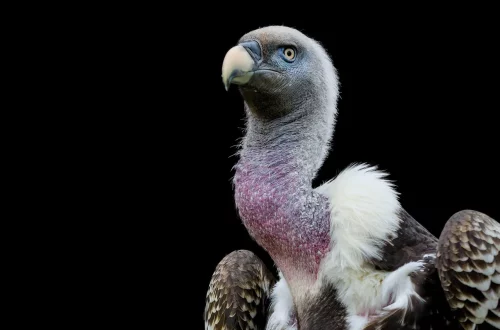
Understanding Dog CT Scan Cost and What to Expect
Understanding the health and wellbeing of our canine companions is a priority for many pet owners. When faced with potential health issues, one of the advanced diagnostic tools available to veterinarians is the CT scan. This imaging technique is invaluable for providing a detailed view of a dog’s internal structures, allowing for accurate diagnoses of various conditions. As technology advances and veterinary practices incorporate more sophisticated equipment, understanding the costs associated with such procedures becomes increasingly important.
A CT scan, or computed tomography scan, uses X-rays to create cross-sectional images of the body. This non-invasive method offers clearer insights compared to traditional X-rays, significantly aiding in the diagnosis of complex conditions such as tumors, internal injuries, and other abnormalities. However, the decision to proceed with a CT scan often comes with questions about the procedure itself, potential risks, and, crucially, the costs involved. As a responsible pet owner, being informed about these aspects can help in making the best decisions regarding your dog’s health.
In this article, we will delve into various factors that influence dog CT scan costs, the benefits of this diagnostic tool, and what pet owners can expect during and after the procedure. By gaining a better understanding of these elements, you can prepare both emotionally and financially for the journey ahead.
The Factors Influencing CT Scan Costs
The cost of a CT scan for dogs can vary significantly based on several factors. One of the primary determinants is the geographical location of the veterinary clinic or specialized imaging center. Urban areas often have higher costs due to increased overhead expenses and higher demand for advanced veterinary services. In contrast, rural areas might offer more competitive pricing due to lower operational costs.
Another crucial factor affecting the price is the type of veterinary facility. Specialty clinics or veterinary schools typically charge more than general veterinary practices due to their advanced technology and expertise. These facilities may also have board-certified veterinary radiologists who interpret the scans, adding to the overall cost.
Additionally, the complexity of the case can impact the cost. If your dog requires sedation for the CT scan, this may lead to additional charges for anesthesia and monitoring. Some scans may also require contrast agents, which can elevate the price further.
Consultation fees can also play a role in the total cost. Before a CT scan is performed, a veterinarian will usually conduct a thorough examination and possibly other diagnostic tests, such as blood work or X-rays, to justify the need for a CT scan. These preliminary assessments add to the overall expense.
Finally, pet insurance can significantly affect how much you ultimately pay out-of-pocket for a CT scan. Some policies may cover a portion of the cost, while others may not. It’s essential to review your insurance policy carefully and consult with your provider to understand what is covered and any potential limitations.
Benefits of a CT Scan for Dogs
CT scans offer numerous advantages when it comes to diagnosing health issues in dogs. One of the most significant benefits is the level of detail and accuracy the scans provide. Traditional X-rays can sometimes miss subtle abnormalities, whereas a CT scan produces high-resolution images that can reveal issues such as tumors, fractures, or internal bleeding that are not visible through other imaging techniques.
Another key advantage is the non-invasive nature of the procedure. Unlike exploratory surgery, a CT scan does not require incisions, making it a safer option for diagnosing internal problems. This aspect is particularly important for older dogs or those with pre-existing health conditions, as anesthesia risks can be higher in these cases.
CT scans can also assist in treatment planning. By obtaining a clear and detailed view of the affected area, veterinarians can formulate more effective treatment strategies, whether that involves surgery, medication, or other therapies. This capability can lead to better outcomes and improved recovery times for dogs facing serious health challenges.
Moreover, the speed of the procedure is beneficial. CT scans can often be completed within a matter of minutes, and the results can be reviewed quickly, allowing for timely intervention. This is especially crucial for acute conditions where every moment counts.
In addition to diagnosing existing conditions, CT scans can also be used for routine screenings in certain breeds predisposed to specific health issues. Early detection can lead to better management and increased longevity, making CT scans a valuable tool in proactive pet care.
What to Expect During and After the Procedure
Preparing your dog for a CT scan can alleviate some of the anxiety associated with the procedure. Prior to the appointment, you will likely be instructed to withhold food and water for several hours to minimize the risk of complications during anesthesia. This fasting period allows for a clearer view during the scan and ensures your pet’s safety.
Upon arrival at the veterinary facility, a veterinary technician will conduct an assessment to ensure your dog is healthy enough for the procedure. This may involve checking vital signs and performing any necessary preliminary tests. Once your dog is deemed ready, they will be sedated to minimize movement during the scan. Anesthesia is typically light, and the staff will monitor your pet closely throughout the process.
During the scan, your dog will be placed on a moving table that passes through the CT machine. The process is quick, often taking only a few minutes. However, the exact duration may vary depending on the complexity of the scan and the area being examined.
After the procedure, your dog will be monitored as they recover from anesthesia. Most pets are able to go home the same day, although some may require an overnight stay for observation, especially if they had a more complex scan or if sedation was more intensive.
Once you return home, it’s important to follow any aftercare instructions provided by your veterinarian. This may include monitoring for signs of discomfort or adverse reactions to anesthesia. Additionally, depending on the findings from the CT scan, your veterinarian will discuss the next steps, which may involve further treatment or follow-up visits.
In conclusion, understanding the costs and expectations surrounding a CT scan can significantly ease the stress associated with the process. Always consult with your veterinarian regarding any health concerns and the best course of action for your furry friend.
**Disclaimer: This article is not intended as medical advice. For any health concerns regarding your pet, please consult a qualified veterinarian.**




